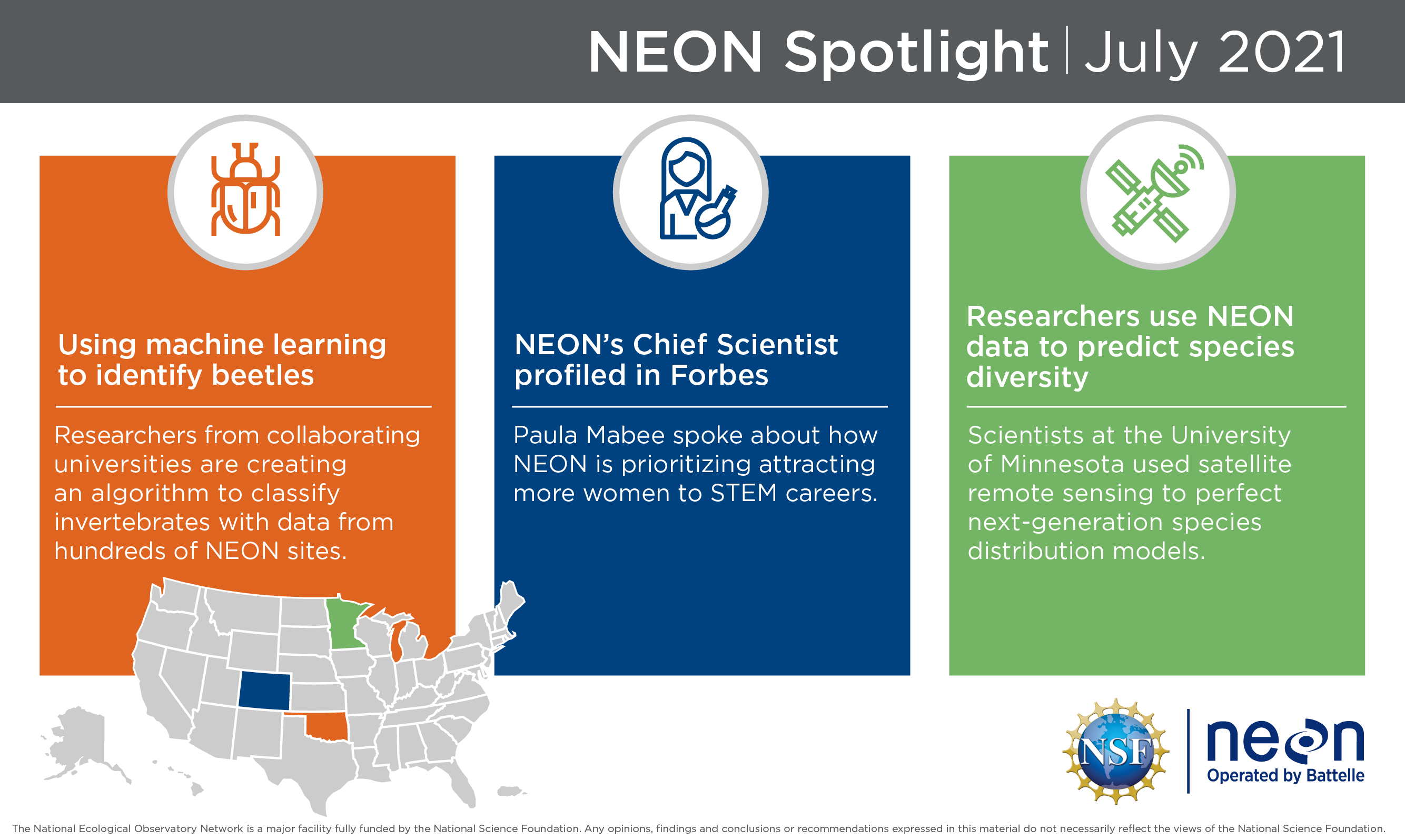July 2021: What’s New with NEON?

This month, we highlight the strides the NEON program is making to draw more women to STEM careers, how the diversity shifts of beetles can offer intel on the trajectory of ecosystems, and unique methods NEON data is being used to predict species distribution. This month’s collection of ecological advances using NEON data is demonstrating the invaluable support NEON sites provide in progressing closer to major ecological breakthroughs.
This Month’s Spotlight
The latest news from NEON includes:
-
NEON's Cheif Scientist profiled in Forbes
Paula Mabee, Chief Scientist and Observatory Director for NEON, recently spoke with Forbes about how NEON is prioritizing attracting more women to STEM careers. “When young women have access to female engineers, scientists and mathematicians, it’s much easier to envision themselves in these careers,” she said. “I’m happy to be part of a group that is enabling discovery and still pushing boundaries on never-before-tackled science.”
-
Using machine learning to identify beetles
In a project funded by the National Science Foundation (NSF) researchers from the University of British Columbia and the University of Oklahoma are creating an algorithm to classify invertebrates using data from 45 NEON sites. There are more than 2,000 known species of ground beetles in North America and shifts in their diversity and range offer key insights into how ecosystems are changing, making accurately identifying species crucial. In the project overseen by Oklahoma University’s Dr. Michael Kaspari, University of British Columbia’s Dr. Katie Marshall and Jarrett Blair – along with University of Oklahoma’s Dr. Michael Weiser and other researchers – are collaborating to develop the algorithm. By analyzing photographs produced using large datasets from the NEON Biorepository, the algorithm learns which features in the data, such as body morphology and color patterns, are associated with different species. “The goal is to create a machine-assisted data pipeline, where the algorithm will provide an initial classification that can be verified and refined by human experts,” explained Blair. “This will vastly speed up the identification process so researchers can get to the more interesting part of the job—asking and answering questions about ecosystems.” -
Researchers use NEON data to predict species diversity
Scientists at the University of Minnesota were looking for a way to accurately predict species composition and diversity, both crucial components in developing conservation and management strategies. To do so, Drs. Jesús N. Pinto-Ledezma and Jeannine Cavender-Bares used satellite remote sensing to perfect species distribution models (SDMs) to build next-generation biodiversity models. Using oak tree data across 19 NEON sites, the team assessed the performance of next-generation biodiversity models until settling on one that worked best.
Sponsored by the National Science Foundation (NSF) and operated by Battelle, NEON is a continental-scale ecological observatory network dedicated to providing high-quality, consistently generated, standardized data that is free and available to all users. By enabling scientists, researchers, and students to address critical questions and understand ecosystem changes over time, the NEON program allows the ecological community to tackle questions and problems at a scale that was not possible before.
You can read about the latest work and research in the NEON Spotlight every month at Inside Battelle, and on our social media channels. For more information about NEON, visit NEONscience.org.
BATTELLE UPDATES
Receive updates from Battelle for an all-access pass to the incredible work of Battelle researchers.